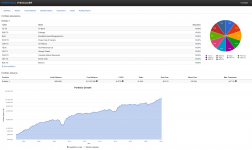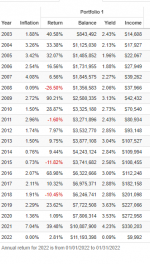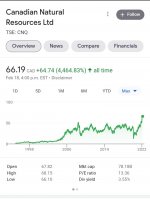This is definitely the biggest factor, IMO. No matter what the economy is doing, you will get your pension payments, unless the whol country collapses.
That being said, I've spoken with several people who have released in their mid-30 with "around" 15 years of service. They all took their TVs and by investing them smartly, they are all on track to far exceed what they would get with a CAF pension, even factoring in what their future rank/inflation adjusted/future pay increase salaries would be if they retired at 35 years.
We were also in a historic bull market for the past decade with unprecedent growth so that might not be the case going forward.
"Past results aren't a predictor for future returns" however, the historic numbers are definitely in your favour if you're willing to take on some risk.
At this point when if I were to elect to take a Deferred Annuity vice a Transfer Value, I would need to wait 25 years to access the money. 25 years is a heck of a long time in the market.
I use a tool called portfolio visualizer to study trends in stocks, you can see the tool here:
Portfolio Visualizer provides online portfolio analysis tools for backtesting, Monte Carlo simulation, tactical asset allocation and optimization, and investment analysis tools for exploring factor regressions, correlations and efficient frontiers.
www.portfoliovisualizer.com
Just to show you just how much money you could potentially make if you were to be just a little more aggressive. I picked 10 stocks and put them in a 20 year portfolio back test going back to 2002.
The rules I used:
1. Only Canadian Stocks
2. Must be a Blue Chip Company/Leader in their Industry
3. Must not have more than 2 in the same sector
4. Must pay a Dividend
5. Equal weighting allocation
6. No Technology Stocks (due to the hyper growth they have experienced and their unpredictability)
The stocks I picked (I just randomly picked these btw):
1. TD Bank (Banking)
2. Enbridge (Oil + Gas)
3. CN Rail (Transportation + Rail)
4. Brookfield Asset Management (Finance + Asset Management)
5. Canadian Natural Resources (Oil + Gas)
6. Bell Canada (Telecom)
7. Teck Resources (Mining)
8. Power Corporation of Canada (Insurance + Finance)
9. Barrick Gold (Gold)
10. George Weston (Consumer Goods)
I then took
@SupersonicMax TV and plugged it in to portfolio visualizer to see what number got spit out. Here are the results:
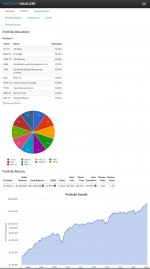
Final value after 20 years is a cool $31 million in value with an average annual return of 16.86% over the 20 year period.
This includes two recessions during this time period, one of which would see the portfolio value drawdown close to 50% (2008) and a number of Commodity Cycles including Oil Price collapses.
More interestingly during this time period, here is a picture of the income that would be generated during this time period:
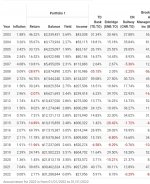
In 2021, these 10 holdings would be generating $927,000.00 in annual income in the form of dividends. If you decided to retire and stopped the DRIP, that's a heck of a lot of income at your disposal for you to enjoy or for your offspring to benefit from when you pass.
Some food for everyone's thought. I'm personally more interested at this point in building generational wealth for my family than I am in the absolute security of a Defined Benefit Pension but that's just me.




